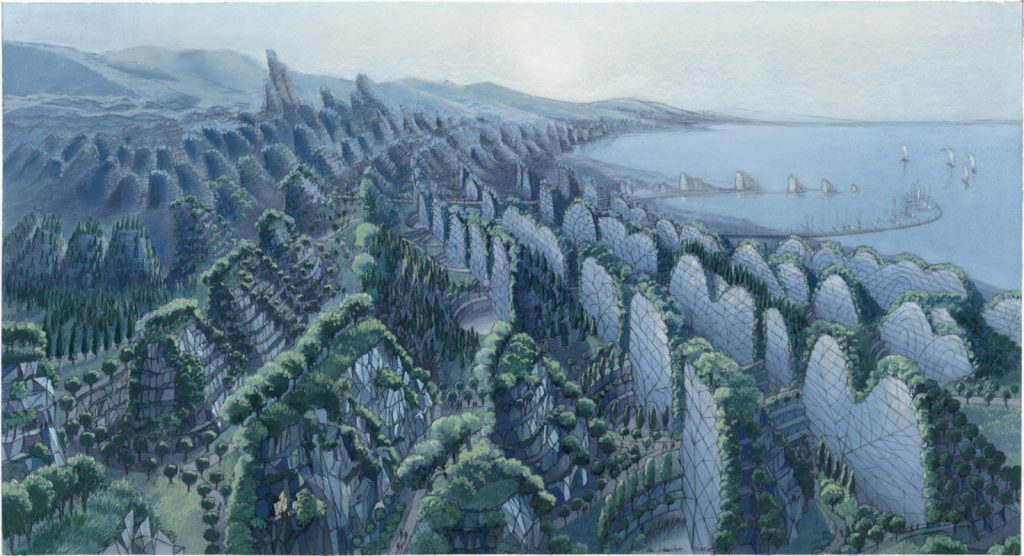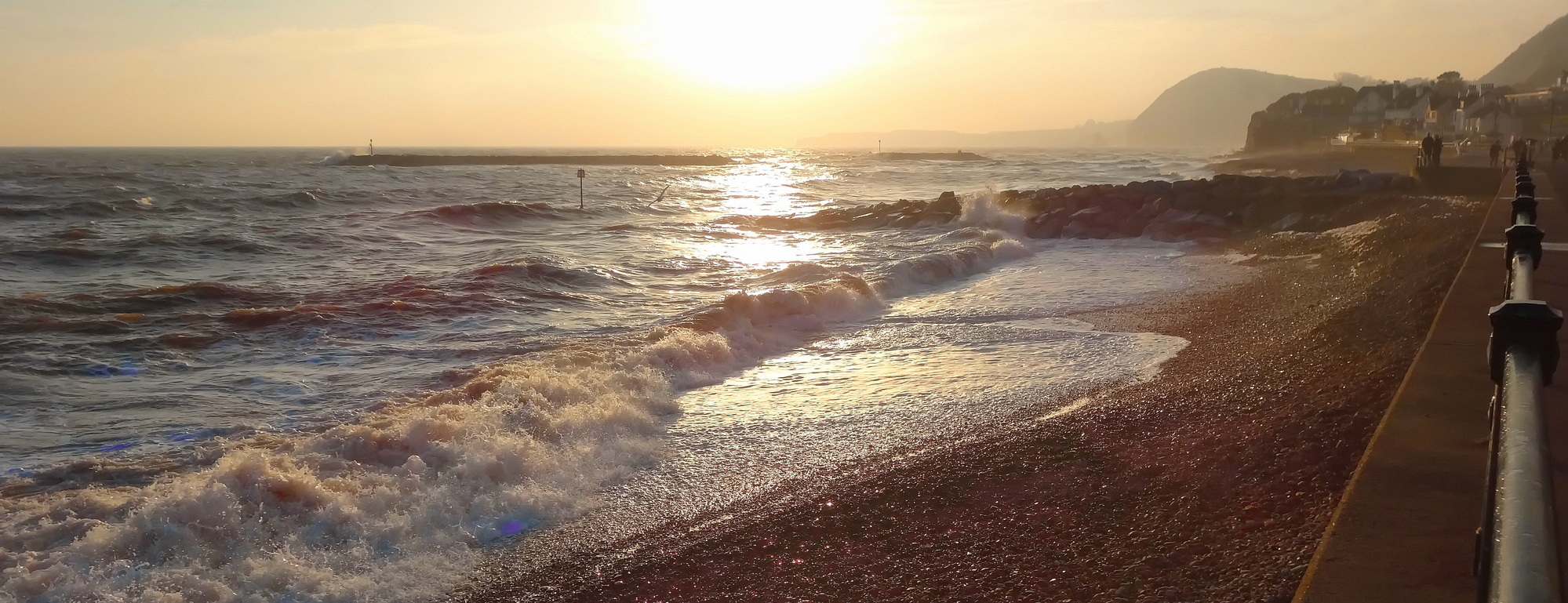We could say the Vision Group for Sidmouth should be all about being ‘visionary’ – with some examples suggesting this, from its blog pages looking at where being visionary might work, whether it was new models of carbon neutral and sustainable development, the idea of rethinking food or the practice of redesigning where and how council employees work.
As a way to get really visionary, the VGS put together the SolarPunk Sidmouth website, starting over three years ago with a pretty solid question for our shared future: “How will we live together?”
And in the ensuing years, the SP Sidmouth blog has put out regular pieces envisioning our future – and how we might get there: that solarpunk is transformative and inspirational, that we can have a solarpunk future… now, and that we need to “imagine having our technologies built in harmony with nature…”, for example.
These pieces really focussed on the inspiration of ‘vision’ – and because their sources were so good, we’re republishing a couple of excerpts: from two of them, here:
In a recent article, we delved into the concept of an ecological civilization, which envisions a new era of humanity, one that prioritizes human and ecological flourishing alike.Perhaps it shouldn’t have surprised us, but what most captivated readers were the images. These images offered enchanting, evocative glimpses of what life could feel like, free from pollution and the looming specter of ecological catastrophe. This type of imagery can quench a thirst in us we didn’t know we harbored. Creating that feeling is the operating strategy behind Solarpunk: “a movement in speculative fiction, art, fashion, and activism that seeks to answer and embody the question “What does a sustainable civilization look like, and how can we get there?”
I was introduced to solarpunk in 2020 and was quickly infected by its appeal. So much so my husband and I decided to name our farm Solar Punk Farms. Our “farm” is more a regenerative education and demonstration site, and thus solarpunk perfectly encapsulates what we’re trying to accomplish: make the sustainable revolution seem irresistible.

An example of solarpunk art, Vegetal Cities by Luc Schuiten (2009)
Our stories of the future have, for too long, been apocalyptic, techno-fascist, or dystopian. The genres of cyberpunk and speculative fiction are dominated by extrapolations of current systems instead of better systems that could be. Although these stories may be intended as warnings, at a certain point, they become self-fulfilling…
Early solarpunk writer Connor Owens stressed the importance of solarpunk as “an eco-futurist movement which tries to think our way out of catastrophe by imagining a future most people would actually like to live in, instead of ones we should be trying to avoid.” He went on to explain, “Solarpunk is a rebellion against the structural pessimism in most visions of how the future will turn out. Not to say it replaces pessimism with Pollyanna-ish optimism, but with a cautious hopefulness and a daring to tease out the positive potentials in bad situations. Hope that perhaps the grounds of an apocalypse might also contain the seeds of something better; something more ecological, liberatory, egalitarian, and vibrant than what came before, if we work hard at cultivating those seeds.”
Solarpunk: Refuturing our Imagination for an Ecological Transformation | One Earth
Imagine being surrounded by lush natural landscapes, buildings covered with verdant plants and vegetation complete with rooftop gardens, and cities that are completely powered by clean energy. Imagine having our technologies built in harmony with nature and shared equally with everyone on the planet. This is what our world should look like as envisioned by the solarpunk movement.

Solarpunk offers a complete opposite vision to Cyberpunk. Instead of decay and dystopias, the future world does not have any existential threats such as the climate crisis hanging over its head, and synergy is achieved between people on Earth and nature, where humans conduct activities that do not harm the environment. Common solarpunk tropes include art nouveau-esque architecture that is intertwined with nature and towering vertical forests – think Singapore’s Gardens by the Bay or its indoor waterfall inside the Jewel Changi Airport…
Our current technologies still fall short of the expectations envisioned by solarpunks, in which designs should be “repairable, reusable and built to last”. But significant progress has already been made. Solar tech is becoming more efficient and at higher capacity, while prices are rapidly falling to the point that solar in 2020 produced the cheapest electricity in history – costing even less than coal and gas in some countries – according to a report by the International Renewable Energy Agency.
…
